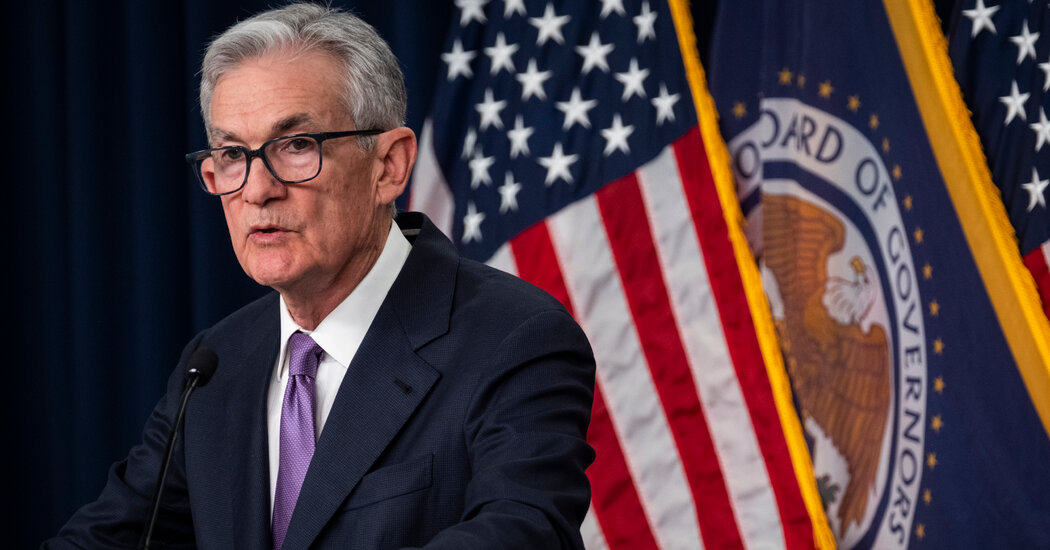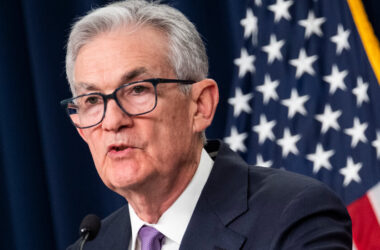Federal Reserve officials wanted to use their final policy statement of 2023 to signal that interest rates might be at their peak even as they left the door open to future rate increases, minutes from their December meeting showed.
The notes, released on Wednesday, explained why officials tweaked a key sentence in that statement — adding “any” to the phrase pledging that officials would work to gauge “the extent of any additional policy firming that may be appropriate.” The point was to relay the judgment that policy “was likely now at or near its peak” as inflation moderated and higher interest rates seemed to be working as planned.
Federal Reserve officials left interest rates unchanged in their Dec. 13 policy decision and forecast that they would cut borrowing costs three times in 2024. Both the meeting itself — and the fresh minutes describing the Fed’s thinking — have suggested that the central bank is shifting toward the next phase in its fight against rapid inflation.
“Several participants remarked that the Committee’s past policy actions were having their intended effect of helping to slow the growth of aggregate demand and cool labor market conditions,” the minutes said at another point. Given that, “they expected the Committee’s restrictive policy stance to continue to soften household and business spending, helping to promote further reductions in inflation over the next few years.”
The Fed raised interest rates rapidly starting in March 2022, hoping to slow down economic growth by making it more expensive for households and businesses to borrow money. The economy has remained surprisingly resilient in the face of those moves, which pushed interest rates to their highest level in 22 years.
But inflation has cooled sharply since mid-2023, with the Fed’s preferred measure of price increases climbing 2.6 percent in the year through November. While that is still faster than the central bank’s 2 percent inflation goal, it is much more moderate than the 2022 peak, which was higher than 7 percent. That has allowed the Fed to pivot away from rate increases.
Officials had previously expected to make one final quarter-point move in 2023, which they ultimately skipped. Now, Wall Street is focused on when they will begin to cut interest rates, and how quickly they will bring them down. While rates are currently set to a range of 5.25 to 5.5 percent, investors are betting that they could fall to 3.75 to 4 percent by the end of 2024, based on the market pricing before the minutes were released. Many expect rate reductions to begin as soon as March.
But Fed officials have suggested that they may need to keep interest rates at least high enough to weigh on growth for some time. Much of the recent progress has come as supply chain snarls have cleared up, but further slowing may require a pronounced economic cool-down.
“Several participants assessed that healing in supply chains and labor supply was largely complete, and therefore that continued progress in reducing inflation may need to come mainly from further softening in product and labor demand, with restrictive monetary policy continuing to play a central role,” the minutes said.
Other parts of the economy are showing signs of slowing. While growth and consumption have remained surprisingly solid, hiring has pulled back. Job openings fell in November to the lowest level since early 2021, data released Wednesday showed.
Some Fed officials “remarked that their contacts reported larger applicant pools for vacancies, and some participants highlighted that the ratio of vacancies to unemployed workers had declined to a value only modestly above its level just before the pandemic,” the minutes noted.
Fed officials also discussed their balance sheet of bond holdings, which they amassed during the pandemic and have been shrinking by allowing securities to expire without reinvesting them. Policymakers will need to stop shrinking their holdings at some point, and several officials “suggested that it would be appropriate for the Committee to begin to discuss the technical factors that would guide a decision to slow the pace of runoff well before such a decision was reached in order to provide appropriate advance notice to the public.”




